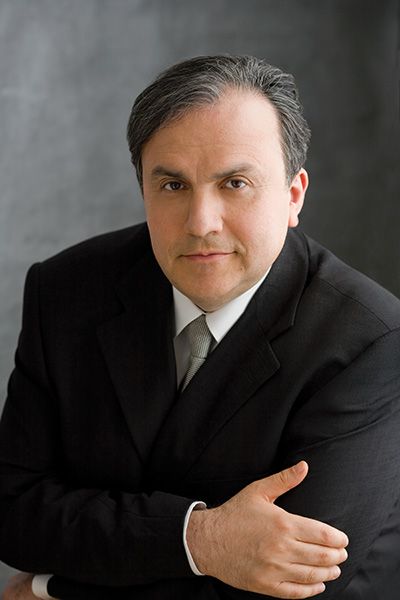 United States Prokofiev: Yefim Bronfman (pianist), Zankel Hall, Carnegie Hall, New York, 13.11.2015 (SSM)
United States Prokofiev: Yefim Bronfman (pianist), Zankel Hall, Carnegie Hall, New York, 13.11.2015 (SSM)

Piano Sonata No. 1 in F Minor, Op. 1
Piano Sonata No. 2 in D Minor, Op. 14
Piano Sonata No. 3 in A Minor, Op. 28
Piano Sonata No. 4 in C Minor, Op. 29
Encores:
Chopin: Etude in F Major, Op. 10, No. 8
Schumann: Romanze from Faschingsschwank aus Wien, Op. 26
I avoid reading other critics’ articles on a musical event that I’m in the process of reviewing, but the headline of Vivian Schweitzer’s piece in the New York Times, “Seemingly Channeling a Mix of Rage and Grief,” caught my eye. As she notes, this concert had a level of intensity beyond the ordinary. I felt the atmosphere in the hall change as the executive director of Carnegie Hall, Clive Gillinson, walked on to the stage. He asked for a moment of silence for the victims of the Paris terrorist attack, which was still unfolding at the time. I’m not even sure that everyone was yet aware of the event, but the audience responded with total silence. Gillinson walked off the stage and Yefim Bronfman entered, bowed quickly, sat down at the piano and ripped into Sergei Prokofiev’s Sonata No. 1.
We still hear complaints that “modern music” is difficult, unpleasantly atonal and dissonant. One would think Prokofiev would be part of the modernists’ post-WWI rebellion against the confines of 19th-century musical rigors, but looking back now, how “modern” was he when all his sonatas and concerti have standard key signatures. His works were still centered around pre-20th-century musical modalities, and his first sonata could have been written by Liszt. The toccata-like opening brings up a romantic, lyrical, catchy theme that dominates the rest of the piece. There are few signs of the future Prokofiev here; the 16-year-old (!) pianist was working out his relationship to the past, testing out what he could do with the material he had mastered. The older Prokofiev would never have let a sentimental theme like this one appear without mocking it. Bronfman added muscle to this youthful work with an intensity that would have rendered other pianists’ hands limp.
A more mature Prokofiev makes an appearance in Sonata No. 2. Almost from the start, at the tempo change to pùi misso, Prokofiev brings out twittering birds reminiscent of the “Ballet of the Unhatched Chicks” from Mussorgsky’s Pictures at an Exhibition. He follows with a lyric theme that starts off normally but quickly goes off balance and becomes asymmetrical. He accomplishes this by repeating the same theme but with two notes changed, one going up, one down. The sonata’s slow andante was sensitively played, and the vivace was fleetingly dispatched.
If the one-movement Sonata No. 3 was an attempt by Prokofiev to see if he could outdo his earlier one-movement Sonata No. 1, then he succeeded. The opening sounds like a continuation of the second sonata’s final vivace movement, slightly slower but marked “tempesto.” All kinds of shifts occur here, sudden changes of tempo, meter and rhythm. The pianist is required to play “agitato,” “feroce” and “percipitato,” as well as “dolce” and “con effetto,” and Bronfman was certainly feroce.
The Sonata No. 4 was written during the same time period as No. 3, and it returns to three movements. This is the calmest and most reflective of the works on the program. Although the first movement is marked allegro, it is usually done more slowly because Prokofiev asks for it to be played “molto sustenuto,” meaning sustained or drawn out. This is followed by an andante. The last movement makes up for the two slower ones with a classic Prokofiev off-beat, wobbly, over-the-speed-limit run that stops dead in its tracks.
The encores were showstoppers themselves: the Chopin lithe and graceful, the Schumann dark and pensive.
Stan Metzger
This is the first of three recitals of the complete piano and violin sonatas (with Guy Braunstein)
Dates: March 9, 2016 and May 7, 2016